Abbeys, Castles & Churches

A trip to Bavaria would not be the same without checking out the beautiful, enormous & somewhat over-the-top buildings that people have created – either to the glory of God, or to their own glory. Given the 20-minute drive from our accommodation in Oberammergau to our next home in Bad Bayersoien, we had plenty of time to explore the area. Our travel agent in Australia, Gerd Wilmer, was born in Germany and had spent a fair bit of time in the area where we were. He had armed us with a truckload of valuable information on what to visit.
First stop Kloster Ettal (Ettal Abbey)
A 10-minute drive from Oberammergau is the pretty town of Ettal. We had passed through on our way from Italy the previous day and whilst enjoying the typical Bavarian architecture and detailed frescoes, we hadn’t thought much more about it. Thanks to Gerd’s local knowledge, he had pointed us to the Kloster Ettal (Ettal Abbey), famous for its baroque church and liqueur. Being right in the centre of town but just off the main road, access was easy in the early morning and we managed to get a parking space just outside. Photos were a little challenging as the sun was just in the wrong spot, but we were stunned by the size and beauty of the structure.


Mad King Ludwig
Ludwig II was King of Bavaria from 1864 until his death in 1886. He is sometimes called the Swan King or der Märchenkönig (‘the Fairy Tale King’). He also held the titles of Count Palatine of the Rhine, Duke of Bavaria, Duke of Franconia, and Duke in Swabia. Unofficially and a lot less salubriously, he is commonly referred to as the mad king due to his extravagance and romanticism.
Ludwig ascended to the throne in 1864 at the age of 18. Two years later, Bavaria and Austria fought a war against Prussia lasting only a matter of weeks, which they lost. However, in the Franco-Prussian War of 1870, Bavaria sided with Prussia in their successful war against France. Despite Ludwig’s reluctance to support the Unification of Germany, Bavaria and 21 other monarchies became part of the new German Empire with Wilhelm I, the King of Prussia and Ludwig’s cousin, as the German Emperor. Bavaria retained a large degree of autonomy within the Empire under the new Imperial Constitution.
Ludwig increasingly withdrew from day-to-day affairs of state in favour of extravagant artistic and architectural projects. He commissioned the construction of lavish palaces: Neuschwanstein Castle, Linderhof Palace and Herrenchiemsee. Ludwig spent all his own private royal revenues (although not state funds as is commonly thought) on these projects, borrowed extensively, and defied all attempts by his ministers to restrain him. This extravagance was used against him to declare him insane, an accusation that has since come under scrutiny. Ludwig was taken into custody and effectively deposed on 12 June 1886, and he and his doctor were found dead on the following day. His death was ruled to be a suicide but this too has been disputed. Today, his architectural and artistic legacy includes many of Bavaria’s most important tourist attractions.
In Oberammergau, we’d stayed in König Ludwig Apartment in König Ludwig Strasse and were given a Konig card, giving us free use of many of the cable cars around the area. We figured we may as well carry on the theme and visit his indulgent castles.
First stop Schloss Linderhof (Linderhof Palace)
Again, on Gerd’s recommendation, we paid the 5 Euros for parking and climbed through the huge gardens to the palace. Wow! Whilst the structure could be deemed beautiful or gaudy, depending on your preferences, nobody could question the stunning setting amongst the mountains. Ludwig must have had a certain amount of sanity to have built his weekender in such a spectacular location. We didn’t bother going into the palace and were happy to be on our way as the busloads of tourists arrived.






An unexpected (and much appreciated) surprise
At this point, we were still unaware of the number of lovely lakes throughout the region. So we were pleasantly surprised as we drove from Linderhof and came across the turquoise glacial stretch of water. Lake Plansee is actually in Austria – we crossed the border soon after leaving the palace. The road followed the lake for a while and we marvelled at the picturesque lake with the mountain backdrop. We were fortunate that it was a spectacular day with vivid blue skies.


A less enjoyable interruption
To this day, we have no idea why we struck a queue of traffic as we neared Fussen on our way to Ludwig’s other castles. What we did realise was that it wasn’t just the typical weekend parking lot that Gerd had warned us about. People were out of their cars, some sitting on the road (literally), other wondering up and down sharing what little information they had. Based on what we could make out, there may have been an accident or a car on fire. Having been caught up in similar accident situations during our travels before, at times being held up for hours, we decided to bite the bullet, turn around and backtrack and take a circular route to our destination just on the other side of Fussen. After all, we were on holiday and had all the time in the world to drive around. We also had a good excuse to relish the drive along the lake for a second time.
A detour to the Wieskirke at Steingarden
Taking the turnoff from the main road, we were unprepared for the little tourist centre set up outside the church – paid parking lot, beer & wurst stand, souvenirs. After all, we had only taken this diversion because Gerd had told us about “one of the finest examples of Bavarian rococo architecture and frescos”. In what appeared to be the middle of nowhere, the huge white structure sure stood out and the interior was something to behold. Little wonder there were so many visitors and that it was added to the UNESCO World Heritage List in 1983.



Ludwig’s other castles
Approaching Neuschwanstein, it looked a little like Disneyland nestled in the hills. There were no stopping signs along the road, but in true Italian rather than German style, we were disobedient and stopped for the obligatory snaps. We made out the top of Hohenschwangau the king’s ancestral home as we navigated the streets and carparks full of tour groups wanting to tick the castle visits off their list. That was enough for us. We were more interested in the hundreds of paragliders that we could see in the surrounding mountains. I don’t know how many can be in the air at the same time without colliding!



Lunch stop

By this stage, we were feeling decidedly peckish so went in search of a bakery. We did manage to find the one we were looking for, but at the same time, we discovered the Edeka supermarket for the first time. This was the beginning of our love affair with the German grocery chain. Spotless, fresh produce and a great selection of meats, fish and cheeses. We bought some cheese slices and bananas and, armed with the sliced bread we’d picked up in Oberammergau where we’d had breakfast, we set off to find a place to eat. Going a little off the beaten track, we came across a lake that was obviously a favourite picnic and watersport spot for the locals. We sat on the grass and munched our lunch.
Stocking up
The good thing about finding the Edeka was that it gave us a place to stock up for the next few days before heading to our apartment in Bad Bayersoien. It was Saturday, shops were either closed or closing early, most would be closed on Sunday and Monday was a public holiday, so we needed to be self-sufficient. It turned out to be a great decision as our new home was so comfortable and well-equipped that we didn’t want to venture anywhere else. Home Sweet Home!
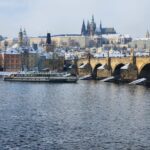
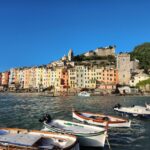
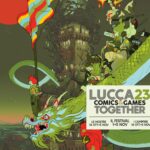
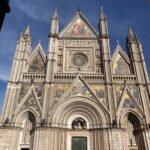
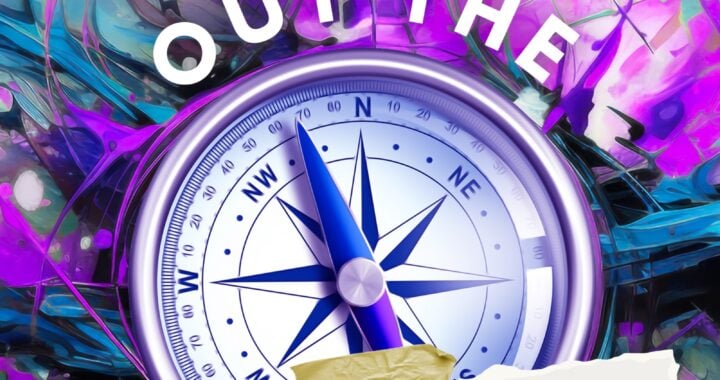 Book Cover Reveal
Book Cover Reveal  Sneak Preview
Sneak Preview 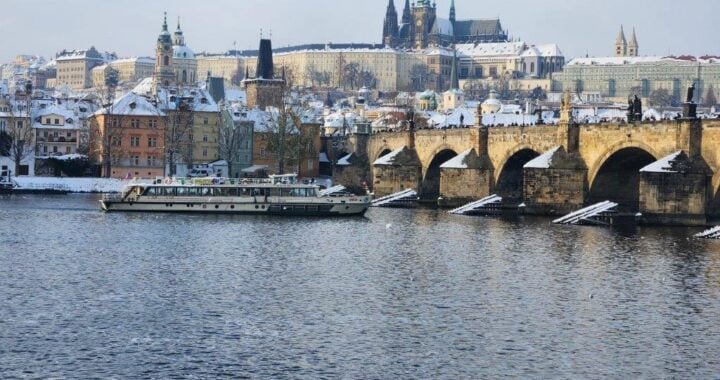 Prague – Winter Wonderland
Prague – Winter Wonderland 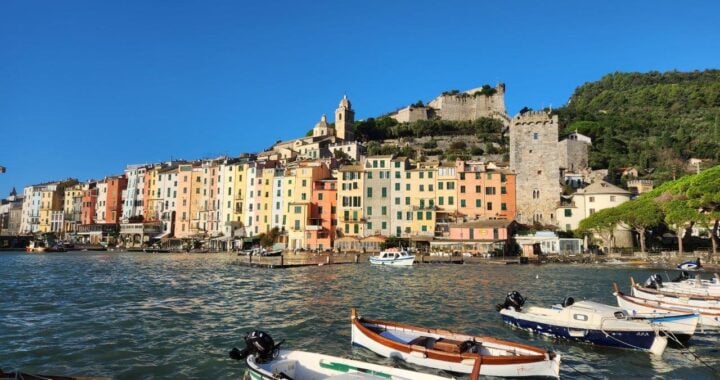 Porto Venere – gateway to the Cinque Terre
Porto Venere – gateway to the Cinque Terre 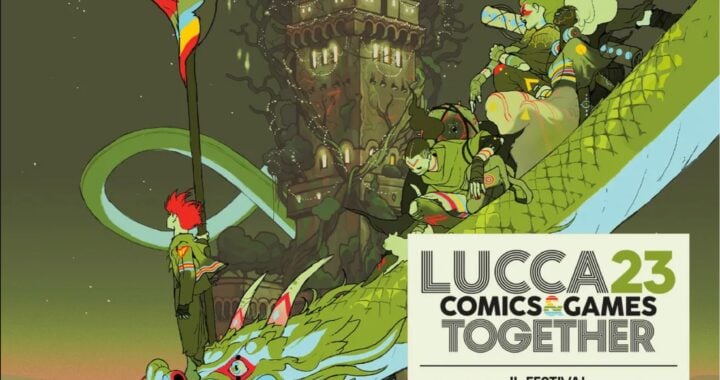 Lucca Comics & Games 2023
Lucca Comics & Games 2023 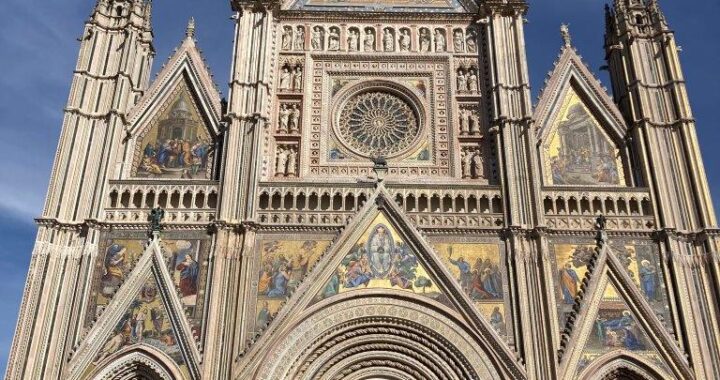 Orvieto – 6 years later
Orvieto – 6 years later